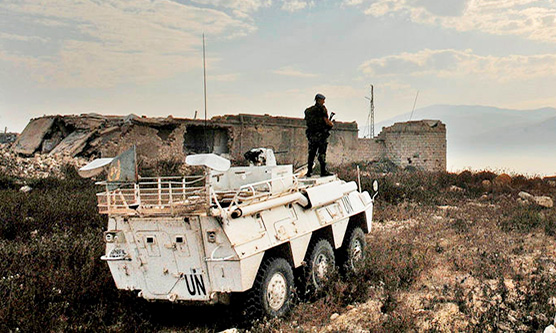Iffat Idris, GSDRC, University of Birmingham Pakistan has been in the international news twice so far this year. First, in spring 2025, for renewed conflict with India following a terrorist attack in Indian Administered Kashmir, IAK. Second, from late June to September, for devastating floods across the country. While, on initial reading, these events appear unconnected ...» more
Conflict analysis
Development and Conflict Prevention in Nigeria
Although donors have increasingly utilised development as a tool for conflict prevention (CP), there has been little systematic reflection on the specific contribution made by development interventions in this area. This report reviews current research on development and conflict prevention, with a particular focus on Nigeria. It also examines research that has undertaken a ...» more
Responses to conflict, irregular migration, human trafficking and illicit flows along transnational pathways in West Africa
This paper explores the links between conflict, irregular migration, human trafficking and other illicit flows along transnational pathways in West Africa – focusing on Niger, Nigeria, Mali, Burkina Faso and Libya as well as the responses to these. The West Africa region is the site of numerous intrastate conflicts, which have transnational dimensions. Even were there is ...» more
Interaction Between Food Prices and Political Instability
This report reviews the literature on links between international food prices and political instability (including protests, riots and social unrest). The literature on food prices and protests, riots, unrest, or violent incidents consists mainly of peer-reviewed scholarly articles that utilise econometric modeling. Some early studies examined the links between international ...» more
Trends in Conflict and Stability in the Indo-Pacific
This report looks at trends in conflict and instability in the Indo-Pacific region, focusing on climate change effects and a number of civil liberties. The Indo-Pacific region is both highly vulnerable to the effects of climate change and already facing significant security risks and challenges, many of which will be exacerbated by the impact of climate change. There are ...» more
Gender and countering violent extremism (CVE) in the Kenya Mozambique region
This evidence synthesis drew on a mixture of academic and grey literature. While the literature on Kenyan women and Al-Shabaab was quite extensive (albeit with gaps, e.g. on returnees), nothing was found on women and Ansar al-Sunnah/violent extremist groups operating in northeastern Mozambique and the Mozambique-Tanzania cross-border region. This report should be read in ...» more
Lessons for coherent and integrated conflict analysis from multilateral actors
This rapid literature review collates lessons from multilateral organisations on their efforts to conduct and apply conflict analysis in fragile and conflict-affected states (FCAS) in a coherent and integrated way. It contains substantial information about the European Union (EU) and the United Nations (UN) and much less about the North Atlantic Treaty Organization (NATO) and ...» more
Institutions, approaches and lessons for coherent and integrated conflict analysis
This rapid literature review explores the new institutional structures and approaches that have emerged to ensure that conflict analysis and action in fragile and conflict-affected states (FCAS) is coherent and integrated across the many actors that now engage in this broadened field of work. This query focuses on the institutions and approaches of, and lessons from, six ...» more
Conflict analysis of Bangladesh
This rapid literature review examines the root causes and dynamics of conflict and (in)stability in Bangladesh. Key findings include: Conflict Profile: Bangladesh has a violent political culture, and has experienced widespread political violence, especially around elections – this is a feature of its increasingly authoritarian democracy Social, ethnic, and ...» more
Preventing/Countering Violent Extremism Programming on Men, Women, Boys and Girls
Gender and age can have a big influence on people’s roles in relation to violent extremism: if they are vulnerable to recruitment, if they join violent extremist groups, the driving factors, what their participation in violent extremism entails, and – critically – what approaches should be taken to preventing or countering violent extremism (P/CVE). Hence, it is important not ...» more
Automation of government processes
This rapid literature review examines the impact of, and lessons from, automating government processes in middle-income countries (MICs) and fragile and conflict affected environments (FCAEs). ...» more
Conflict analysis of The Philippines
This rapid literature review examines the main conflict and instability drivers in the Philippines. Key findings include: Conflict profile The conflict has been a longstanding feature of the Philippines, with two long-running insurgencies, and a number of other types of conflict and violence. The current situation is complex and dynamic, with an “increasingly fragmented ...» more
Community cohesion projects to prevent violent extremism
This review looks at the use of community cohesion projects to prevent or counter violent extremism (P/CVE). It finds that such initiatives can be helpful in conflict-affected societies, but there are limited evaluations in the literature, and these generally do not make a direct causal link between interventions to promote social (community) cohesion and P/CVE. The retreat of ...» more
Current Trends in Violent Conflict
This rapid literature review presents the key literature that discusses current trends in violent conflict. The focus is upon recent ideas that are prevalent in literature from post-2015. The literature review draws on both academic and grey literature. The review includes both quantitative analyses of conflict data sets (Szayna et al, 2017a; 2017b; Watts, 2017) and qualitative ...» more
Livestock and Conflict in South Sudan
Livestock are critically important in South Sudanese society1 and this is reflected in the role livestock play in the country’s conflict, both serving as drivers of conflict and being negatively impacted by the conflict, with the two often reinforcing each other in a vicious cycle. This review drew largely on a mixture of academic and grey literature to assess the ...» more
Youth vulnerability to violent extremist groups in the Indo-Pacific
This review of factors driving youth vulnerability to recruitment by violent extremist groups in the Indo-Pacific highlights the variety of factors involved, and the importance of looking at each situation individually. It is impossible to generalize: youth recruitment is context-specific. In Bangladesh the political situation has created space for violent groups, with youth ...» more
Conflict, instability and resilience in Nigeria
This paper analyses the structural challenges, root causes and dynamics of conflict, instability and resilience in Nigeria. The first half of the paper explores the overall socio-economic, socio-cultural, political and environmental factors that shape conflict, instability and resilience in Nigeria. The second half of the paper explores the specific regionalised conflicts in ...» more
Drivers of conflict in Tunisia: An annotated bibliography
Tunisia has witnessed an increase in conflict activity in recent years, both in the form of violent political protest and acts of violence perpetrated by armed jihadist groups. This report identifies some of the key literature on drivers of conflict in Tunisia, looking at both short-term and structural factors. The literature included in this report identifies the following ...» more
Violent extremism and terrorism in Yemen
Al Qaeda in the Arabian Peninsula (AQAP) first gained control of territory in 2011 when it took advantage of political chaos; it once again managed to take control of territory following the current civil war, which began in early 2015. AQAP’s aim is to create a number of smaller emirates, which will eventually link to form a caliphate when they deem the time is right. AQAP ...» more
Conflict analysis
Conflict analysis is a structured process of analysis to understand conflict. It focuses on the conflict profile (its history), the actors involved and their perspectives, the causes of conflict, and the dynamics of how these elements interact. This Topic Guide looks at how conflict analysis is done – at the systematic approaches and tools for conflict analysis developed for ...» more



